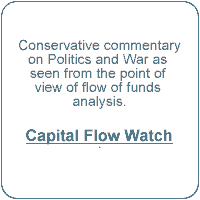 Practical Application of Flow of Funds Analysis
Practical Application of Flow of Funds Analysis
Case Study: Author's Postscript
Portfolio Management: Practical Application
Applying Flow of Funds Analysis to Portfolio Management
I sold my interest in S-N Investimentos in 1971, but by 1975 I was back in the market as a director of Chase Manhattan's Brazilian banking operation that included a licensed 'investment bank' as well as a commercial bank.
By then, it was clear that the licensed 'investment banks' would dominate the Brazilian market and that this required more capital than most individuals could accumulate.
Although with assets of over US$3 billion. Chase's Brazilian investment operations were small, with only 38 branch banks, compared to local financial groups. This was a disadvantage when competing with Brazilian banks that had hundreds of branches.
Since the volume of 157 funds that a bank could collect was directly related to the size of its banking network, a small branch network was a handicap for underwriting and fund management business.
Under Decree-Law 1401 of 1975, I set up one of the pioneer 'emerging market' funds, raising capital in Europe to form the first 'Brazil Fund'.
 The first 'Brazil Fund' pioneered investment in emerging markets in 1975.
The first 'Brazil Fund' pioneered investment in emerging markets in 1975.Because of Brazilian governmental restrictions that prohibited foreign institutions from managing the money of their clients, the amount raised was a modest $11 million.
Chase Bank's 157 fund, with only 38 Brazilian branches to collect funds, was also small.
The Economics of Portfolio Management
Competitors in the fund business with huge branch networks could afford to pay ten times more than my group could for investment research.
One investment bank had a staff with two dozen analysts, while our bank could afford only two.
Furthermore, Serviço Nacional de Investimentos had been sold and resold and was now closing. Low cost, quality securities statistics were no longer available.
However, the flow of funds configuration that had driven the 1971 Bubble still lingered and, although there was no longer a queue for approvals of new issues, statistics for stock offerings, 157 funds, and mutual funds were available.
In any event, at least half of price changes in the stock market could be attributed to 'systemic risk' that could not be reduced by money spent on security analysis.
Computerized Portfolio Management in the 1970s
On a Wang computer, I set up a portfolio management system that combined Graham-and-Dodd type security analysis with Modern Portfolio Theory, and that used flow of funds analysis to control systemic risk.
When the flow of funds data suggested that lower prices were imminent, we would select appropriate betas in rebalancing our positions. Although it was not feasible under the fund's by-laws to get out of stocks into cash, when it seemed the market was likely to fall, we could at least concentrate holdings in stocks that would be less likely to drop as fast in a down market.
 Pushing the Envelope: Automated Security Analysis on a Wang Computer: 1976
Pushing the Envelope: Automated Security Analysis on a Wang Computer: 1976The results were quite satisfactory.
During the three years that I managed these funds, our performance ranked in the top one percentile.
Despite competitors' larger staffs, our research department was cited as one of the two best in the country by the Security Analysts' Association.
The co-winner had a technical department ten times as large.
This fund management experiment suggested that flow of funds analysis could be a cost-effective tool for professional portfolio management.
Not Yet Capital Flow Analysis
However, the techniques used for flow of funds analysis in 1976 and 1977 did not yet qualify as Capital Flow Analysis.
- The method was based on isolated statistical series, not national flow of funds accounting.
- There was no Motivation Axiom or Irrationality Axiom to provide a theoretical framework.
By 1978, my attention had moved from portfolio management to market planning for the commercial bank of which I was an executive director.
In 1980, I left Brazil and spent the next twenty years advising governments in emerging economies on capital market development.
Only in 1998, on examining the Federal Reserve flow of funds accounts, did I note the long-trend movement of corporate stock buybacks that suggested the same type of desequilibrium that I had seen in the Brazilian market in 1971.
However, to transform this observation into a practical technique for Capital Flow Analysis took another five years.

